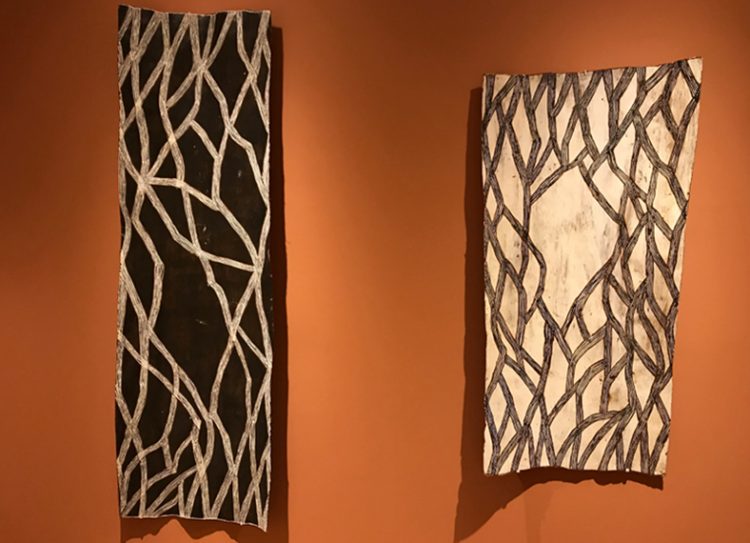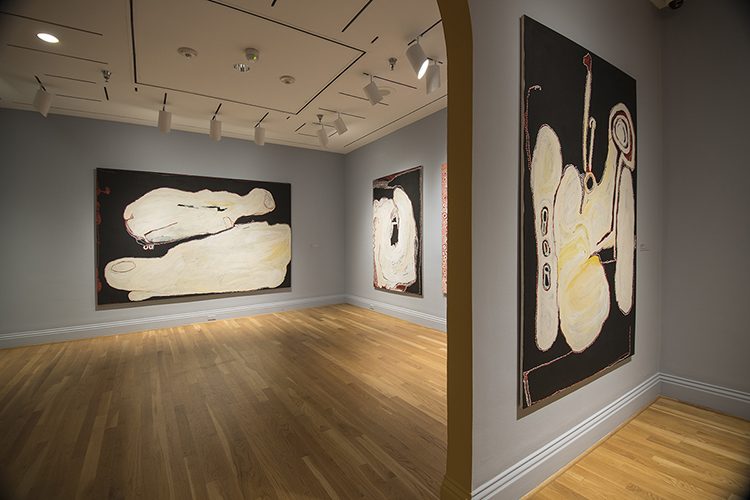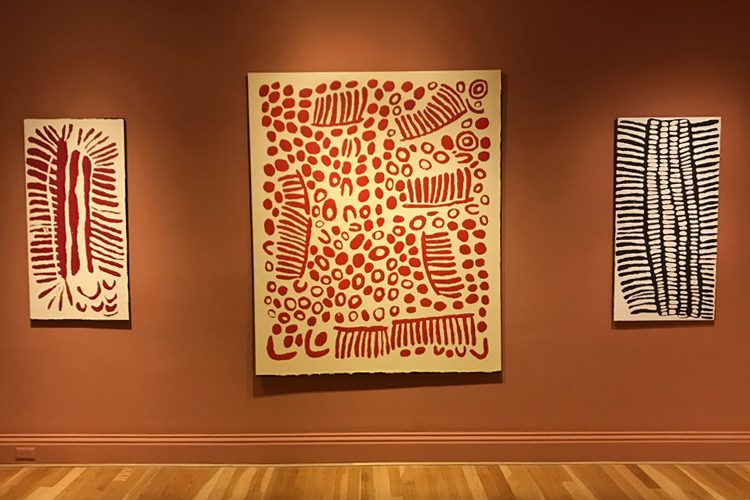Nonggirrnga Marawili’s early works primarily represented the motifs of her husband’s clan, the Djapu. Recently, however, she has focused on the designs of her own Madarrpa clan. Her patterns echo sacred Madarrpa iconography, but she renders them in expressionistic, personal ways out of respect for the prohibitions of Yolngu Law, according to which only certain people can hold a proprietary claim to paint these designs. She explains: “This Yirritja painting I’m doing is coming from the heart and mind, but it’s not the sacred Madarrpa painting. It’s just an ordinary fire, not the Madarrpa fire: tongues of fire, fire burning backwards. This is just my thinking. No one told me to do this pattern. I did this on my own. When the elders see it they will let me know what they think.”
These works are on view in Marking the Infinite: Contemporary Women Artists from Aboriginal Australia through September 9, 2018.



